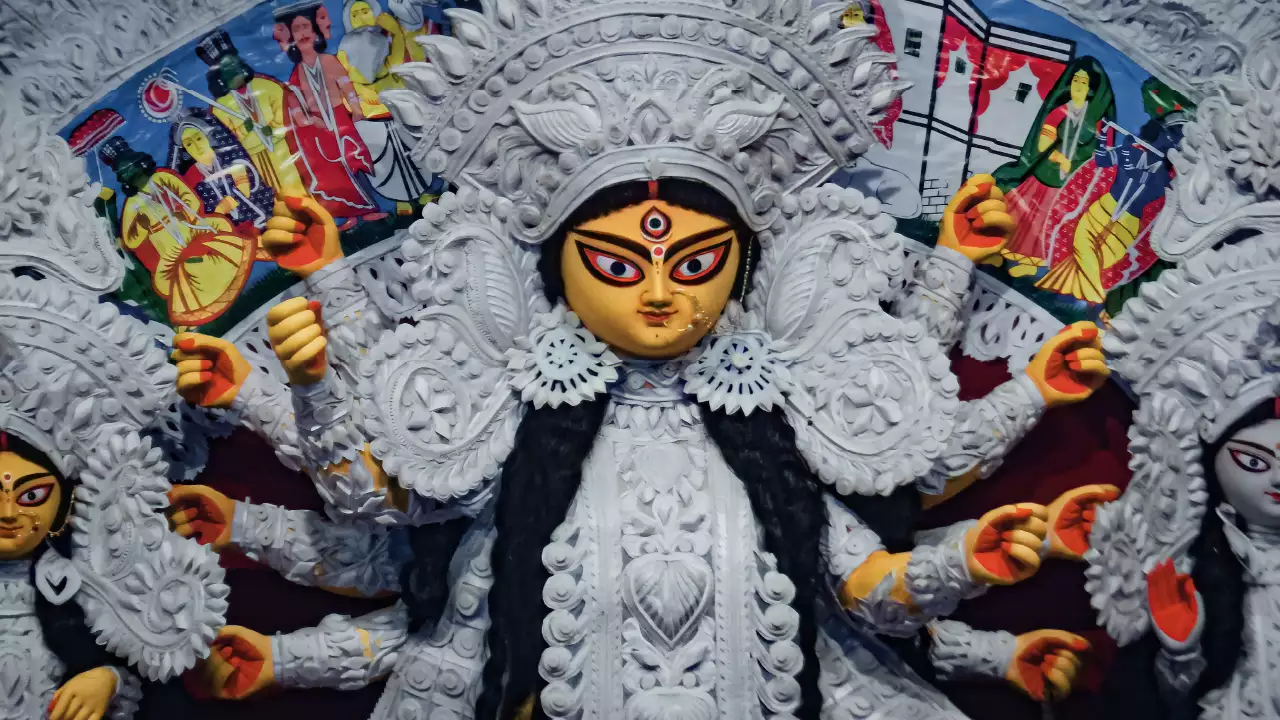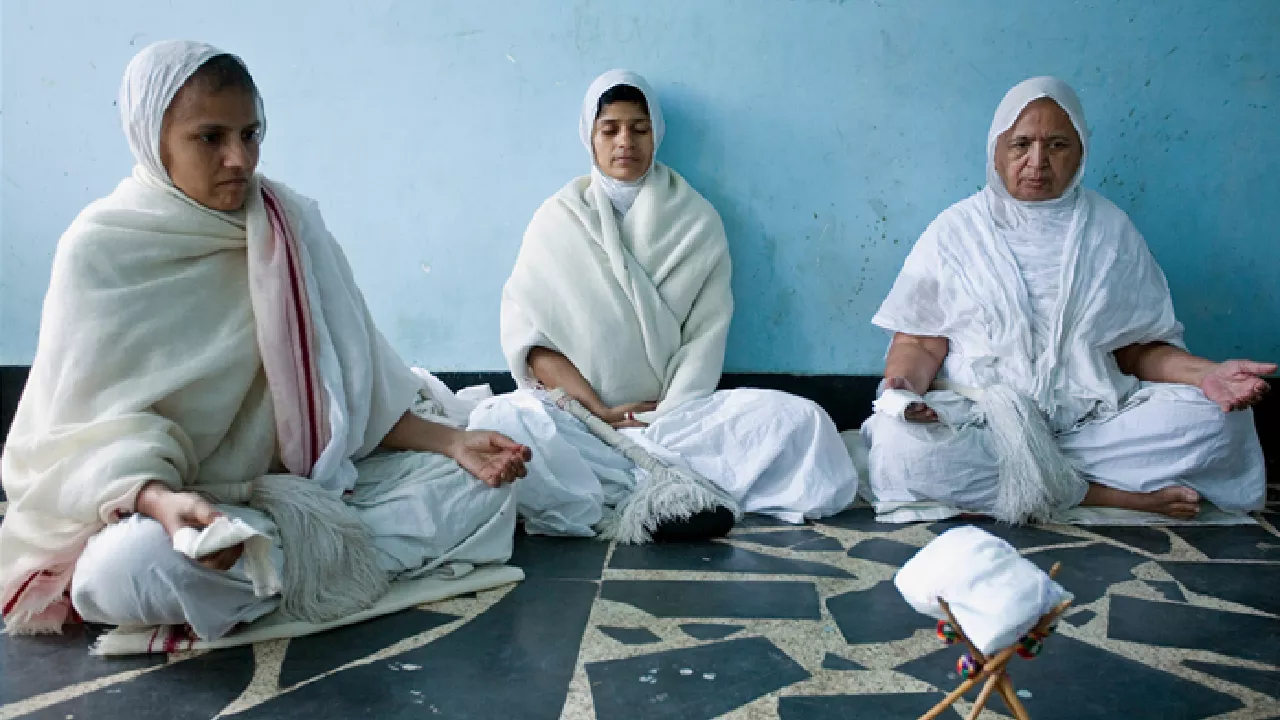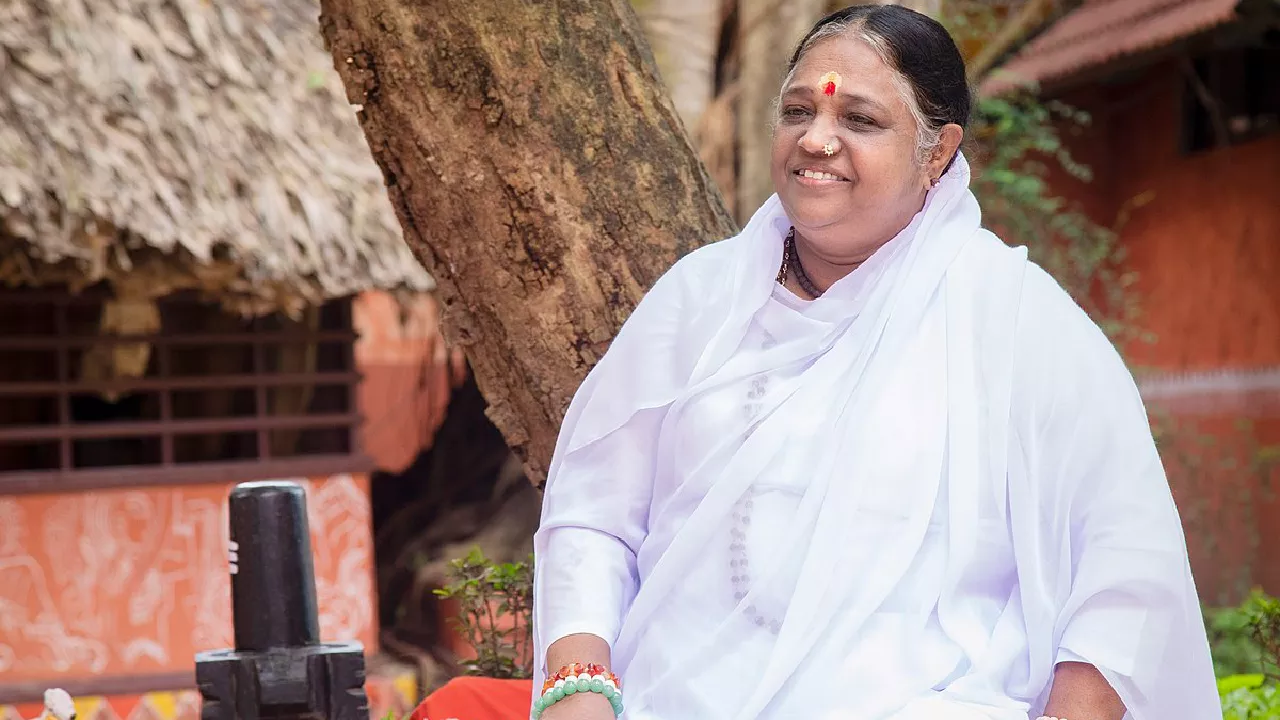The vast expanse of Indian spirituality, with its myriad rituals, beliefs, and traditions, is deeply intertwined with the essence of the feminine divine. This isn’t merely a concept but a pulsating, living energy revered and celebrated across the subcontinent.
From the verdant valleys of Kashmir to the temple towns of Tamil Nadu, the feminine aspect of divinity has been venerated, symbolizing not just fertility and motherhood, but also wisdom, strength, and transcendence.
In ancient Indian scriptures, the universe’s creation is often described as a dance between masculine and feminine energies. The feminine, known as ‘Shakti’ in Sanskrit, is the dynamic force driving creation, preservation, and transformation in the universe. She is the life-giving river, the nurturing earth, the blazing fire, and the boundless sky.

Yet, the feminine divine in Indian spirituality is not just limited to cosmic functions. She is the village deity protecting local communities, the fierce goddess demanding sacrifice, the benevolent mother offering solace, and the mystic yogini imparting wisdom.
Her narratives, whether in sacred texts, folklore, or local traditions, often challenge societal norms, pushing boundaries and redefining concepts of purity, power, and devotion.
As we delve deeper into the role of women in Indian spirituality, we embark on a journey that transcends time and space. We encounter tales of devotion, valour, and wisdom, each echoing the myriad facets of the feminine divine and her indomitable spirit.
The reverence for the feminine divine in Indian spirituality finds its most vivid expression in the worship of goddesses. Central to this veneration is the concept of ‘Shakti’, the primordial cosmic energy representing the dynamic forces that breathe life into the universe.




In essence, the worship of Shakti in her myriad forms underscores the Indian spiritual landscape’s depth and diversity. It’s a celebration of life in all its facets, recognizing the feminine as the nurturing, creative, and transformative force that shapes and sustains the universe.
Throughout the annals of Indian spirituality, the voices of women saints and mystics have resonated with profound depth, challenging societal norms and redefining the paths of devotion and realization.
Their lives, marked by unwavering faith and an indomitable spirit, serve as beacons of inspiration, transcending time and geography.


In the stories of these women saints and mystics, we find a recurring theme of unwavering devotion, resilience in the face of adversity, and a deep yearning for union with the divine.
Their lives and teachings serve as a reminder that the path to spiritual realization is open to all, irrespective of gender, caste, or societal status.
Sikhism, founded by Guru Nanak in the 15th century, stands as a beacon of equality, emphasizing the inherent worth and dignity of every individual. From its very inception, Sikhism has championed the rights and roles of women, placing them on an equal footing with men in spiritual, social, and political spheres.


In conclusion, the role of women in Sikhism is not just that of followers but leaders, visionaries, and torchbearers of the faith. Their contributions, both historical and contemporary, enrich the Sikh community, making it a vibrant and inclusive spiritual path.
Both Jainism and Buddhism, ancient religions that originated in India, have recognized and incorporated the spiritual capacities of women. While they have provided avenues for women’s spiritual growth, they have also grappled with societal norms and cultural contexts that influenced their practices and doctrines.




In essence, women in Jainism and Buddhism have navigated the intricate balance between tradition and transformation, making significant contributions to their respective religions. Their journeys, marked by devotion, wisdom, and resilience, enrich the tapestry of Indian spirituality.
The contemporary spiritual landscape of India is dotted with influential female figures who, drawing from ancient traditions, address modern challenges and cater to the spiritual needs of a global audience. Their teachings, often a blend of traditional wisdom and modern insights, resonate with millions, transcending borders and cultural barriers.





In the lives and teachings of these modern spiritual leaders, we witness the timeless wisdom of Indian spirituality being channelled to address contemporary challenges. Their influence, spanning continents, serves as a testament to the universal appeal and relevance of their messages.
The tapestry of Indian spirituality, rich and diverse, is interwoven with the threads of feminine energy, wisdom, and devotion. From the ancient hymns sung in reverence to goddesses to the modern voices advocating for spiritual awakening and societal change, women have been, and continue to be, the heartbeat of India’s spiritual journey.
Historically, women have not just been passive recipients of spiritual teachings; they have been seers, sages, and custodians of these traditions. They have questioned, challenged, and redefined spiritual norms, ensuring that the flame of inquiry and devotion continues to burn brightly.

In the modern era, as the world grapples with challenges of disconnection, environmental crises, and societal upheavals, the voices of women’s spiritual leaders offer solace, guidance, and hope. They bridge the ancient and the contemporary, reminding us of timeless truths while offering solutions tailored to today’s world.
The role of women in Indian spirituality is a testament to their resilience, wisdom, and immense capacity for love and compassion. It’s a journey that has seen them rise from the confines of societal norms to the vast expanses of cosmic consciousness.
And as this journey continues, it promises to usher in new understandings, deeper realizations, and a more inclusive and harmonious world.
In celebrating the role of women in Indian spirituality, we don’t just honour their past contributions; we also pave the way for a future where every individual, irrespective of gender, can access the profound depths of spiritual wisdom and experience the boundless love of the divine.
Best Time for Trekking in Nepal – Introduction Nepal, the land of the Himalayas, is a trekker’s paradise, offering an unparalleled array of stunning landscapes,...
Unveiling the Kanchenjunga Trek: A Himalayan Odyssey The Kanchenjunga Trek, an epic journey to the base camps of the world’s third-highest mountain, Mount Kanchenjunga (8,586...
Introduction – Everest Base Camp Trek The majestic Himalayas have captivated adventurers for centuries, and standing at the foot of the world’s highest peak, Mount...
Introduction to the Annapurna Circuit Trek The Annapurna Circuit, often hailed as one of the world’s greatest treks, is a circular route around the Annapurna...
Introduction: Embark on an Unforgettable Jungle Adventure in Chitwan National Park Nestled in the lush plains of south-central Nepal, Chitwan National Park stands as a...
Get help from our experts:
+91 775 409 7777
+91 911 523 4555
Office Hours:
Monday-Saturday
10AM TO 9PM
Sunday
12PM TO 6PM